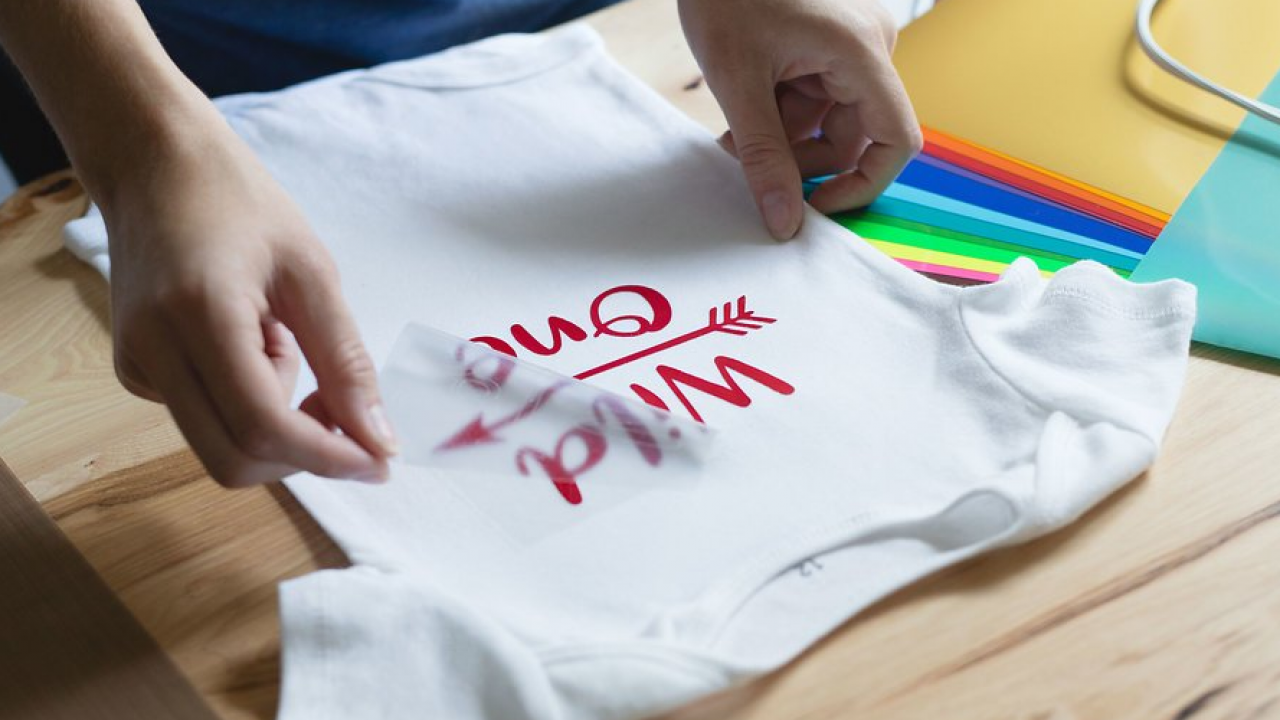What is t-shirt heat transfer printing and what you need to know
Previously printed T-shirts will often crack or lose their original image after a long time of use. To overcome this situation, t-shirt heat transfer printing technology was born to improve product quality. Join Custom T Shirt printing to immediately learn about this new technology, who knows, maybe you can pocket some cool things.
What is t-shirt heat transfer printing?
Have you seen class shirts, 3D shirts or group shirts printed with sharp, realistic images without being scratchy, without a plastic layer or sticking when washed? That’s because the shirt uses heat transfer t-shirt printing technology . T-shirt heat transfer printing technology is essentially a type of digital printing on fabrics.
T-shirt heat transfer printing technology uses heat transfer ink and heat transfer paper. The image will be printed on heat transfer paper and then a hot press will be used to transfer the image onto the material to be printed. The principle of this process is based on the sublimation of ink.
In fact, heat transfer printing is widely used to print advertising, clothing and gifts. Companies can print photos, logos, and brands on ceramic cups, plates, crystal, glass, ceramic tiles, and wood. In the field of apparel and fashion, heat transfer printing is used to make uniforms, team shirts, sports uniforms, soccer uniforms…
Tools needed when heat transfer printing t-shirts
To create a heat transfer printed t-shirt, you need the following tools:
- T-shirt thermal printer : Digital thermal printer, multi-color and uses specialized ink to print images on heat transfer paper. Depending on the scale of the factory and production needs, the factory will choose a printer with appropriate size and production ability.
- Sublimation ink : Oil-based ink is the most popular choice because of its resistance to discoloration at high temperatures.
- Heat transfer printing paper : You cannot print the image directly on the shirt but must put it through printing paper or heat transfer decal. This product is covered with a layer of glue to fix the image and all content is transferred to the shirt after printing . Heat transfer by machine.
- Heat press machine : Uses pressure to apply heat transfer printed paper, then uses heat to transfer the image to the product.
- Thermal printed T-shirt blank : A plain T-shirt product. White or light colored poly material will give the best printing quality. Cannot print on 100% cotton or high cotton fiber content.
- Protective gear : Due to frequent exposure to chemicals and high temperatures, during the heat transfer printing process, you should use labor protection equipment such as glasses, masks, and gloves.
Advantages and disadvantages of t-shirt heat transfer printing
Advantages of t-shirt heat transfer printing
- High resistance to fading : This is the biggest advantage of using heat-printed t-shirts, there is absolutely no worry about the shirt fading, it is extremely durable so it can be machine washed comfortably.
- Good printing quality: After printing the shirt using heat transfer technology, the ink will absorb onto the surface of the fabric so it will not cause pilling, maintaining the fabric’s elasticity, absorbency and smooth surface so it does not cause discomfort. for the wearer.
- Print t-shirts on demand : You can use thermal printers for images with difficult details, colorful portraits, and even 3D images. It retains its sharpness after printing and looks exactly like the model.
- Heat transfer printing products have high uniformity : Heat transfer printing uses high-end printers, colors are mixed completely automatically. Therefore, ensure the colors are the same as the design and the products are highly consistent.
- Heat transfer technology meets the requirements for printing in large quantities : T-shirt heat transfer printing technology is designed to print high-end t-shirts, group shirts, uniforms, and shirts printed together. Quality is always guaranteed, even if it is more than one. In particular, this technology is also used for the wholesale business of heat-printed plain T-shirts from garment companies.
- Fast time : The heat transfer printing process using modern machinery has been greatly shortened. The factory can produce thousands of products in just a few days.
Disadvantages of heat transfer printing on t-shirts
Any printing method has its drawbacks and so does T-shirt sublimation printing. Disadvantages of heat transfer t-shirt printing are:
- Printing dark fabrics of poor quality : If you want to 3D print a dark shirt like black or brown, this printing method becomes difficult. Because the ink used in this printing method is often used on light-colored fabric surfaces such as white, cream, yellow, or light blue. Leads to poor image quality compared to light fabrics.
- Doesn’t work well with cotton : Sublimation printers are great for football shirts, t-shirts with high PE or polyester content. If the product contains a high cotton content, quality cannot be guaranteed, the print will be blurred, and the color will not be accurate.
- Poorly heat-resistant fabrics: Heat transfer printing uses a heat press to sublimate the ink. Therefore, it cannot be used with fabrics that cannot withstand heat because it may burn and cause the fabric to fade.







